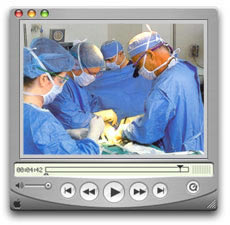Tubal Reversal Procedures
There are 3 types of tubal reversal procedures:
• anastomosis
• implantation
• salpingostomy
Anastomosis of Fallopian Tubes
Anastomosis connects two body parts. Tubotubal anastomosis is connecting two segments of the fallopian tube. Tubotubal anastomosis is correct medical terminology, but it is also called tubal anastomosis for short. Bilateral tubal anastomosis means that both tubes are repaired by the anastomosis technique. The anastomosis sites can be specified for each fallopian tube. They may be different for the two sides. For example, a patient may have a right isthmic-ampullary tubotubal anastomosis and a left ampullary-ampullary tubal anastomosis. Sometimes, only one fallopian tube is repairable with the anastomosis technique. This is called unilateral tubotubal anastomosis.
Read More about tubotubal anastomosis
Implantation of Fallopian Tubes
Implantation of the fallopian tube is inserting the tube through a new opening into the uterus. Tubouterine implantation is correct medical terminology, but it is also called tubal implantation, uterotubal implantation, or uterine implantation. Most tubal ligation operations leave two fallopian tube segments that can be reconnected. In some cases, only one tubal segment remains that is separated from the uterus and the portion of the tube within the uterine muscle is blocked as well. This is most likely to occur when a tubal ligation has been performed by monopolar tubal coagulation applied to the tubal segment next to the uterus. In this situation, tubal implantation is required as the tubal reversal procedure.
Read More about Tubouterine implantation
Salpingostomy
Salpingostomy is creating an opening in the fallopian tube. It is also called neosalpingostomy, which more clearly indicates the creation of a new opening in the tube. Salpingostomy is the appropriate tubal reversal procedure when the end closest to the ovary is closed and the fallopian tube has not been divided into separate segments. This is what results from a fimbriectomy tubal ligation. It can be seen also when a fallopian tube has become closed as a result of infection (salpingitis).
Read More about Salpingostomy


No comments:
Post a Comment